Sigma 1835 18 Art Focal Ranges for Micro 43
DISCLOSURE: AS AN AMAZON ASSOCIATE I EARN FROM QUALIFYING PURCHASES.
THIS Postal service MAY Comprise Affiliate LINKS, Meaning, AT NO ADDITIONAL Cost TO Yous, I EARN FROM QUALIFYING PURCHASES. Affiliate LINKS ARE MARKED WITH #ad . "I" IN THIS CASE MEANS THE Possessor OF FILMDAFT.COM. Please READ THE FULL DISCLOSURE FOR More than INFO.
If y'all own a micro-iv-thirds system photographic camera and yous're in the market for a wide-angle or portrait-length zoom lens, then you've probably heard people talking about the Panasonic Lumix 12-35mm f/2.viii II and the Sigma 18-35mm f/1.viii Art lenses.
I oft see comments where people inquire advice on one or the other e.g., which one to buy.
And I tin understand why because the lenses are in many ways comparable: the lenses comprehend approximately the aforementioned focal length, and both accept a abiding aperture with "only" 1⅓ of departure in low-cal.
So why would you need i over the other?
Well, I own and have used both extensively for client work and personal projects for a couple of years now. In the process, I have gotten to know the strengths and weaknesses of both of these lenses.
And allow me kickoff by saying that the similarities stop here.
Each lens has its own strengths and weaknesses. For some blazon of jobs, I've come to depend on one and for other types of jobs, I prefer the other.
So permit's go over each of these lenses and their pros and cons. And I'll get into when I use what lens.
Hopefully, by the finish of this article, you'll be ane step closer to making a ownership determination yourself.
Panasonic Lumix G X Vario 12-35mm f/2.8 ii ASPH. Power O.I.Due south.
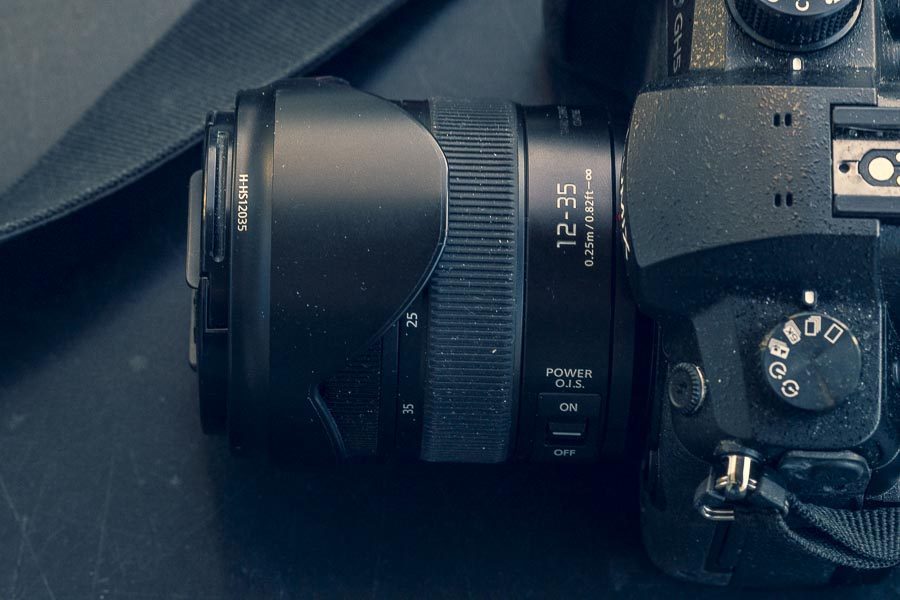
Permit's start talking a bit about the Panasonic 12-35mm f/2.8 ii.
I love this lens because it is a slap-up all-around lens for run-and-gun video and photography jobs.
The lens covers a convenient focal length range of 12-35mm in micro-four-thirds terms, which is the equivalent of 24-70mm in full-frame (FF) a.yard.a. 35mm cameras when information technology comes to the field-of-view (FoV).
If yous're not already familiar with the micro-fourth (aka MFT or m43) arrangement, yous have to double the focal length range because of the crop factor when you compare the lens to a 35mm full-frame organization, which is the standard for comparing.
The 24-70mm range is extremely versatile and popular focal length range in Full Frame systems. But all the full-frame lenses, which covers this range are big and heavy. Enter the 12-35mm for MFT!
Image quality

The Lumix 12-35mm is capable of producing some very sharp images through the whole focal range.
It is not as precipitous as the Sigma. Merely it is still so precipitous, that I adopt to dial the sharpness of my GH5 down to minus 5 whenever I'm shooting video. And fifty-fifty and then, I think the image is all the same also precipitous for some things.
Small-scale size
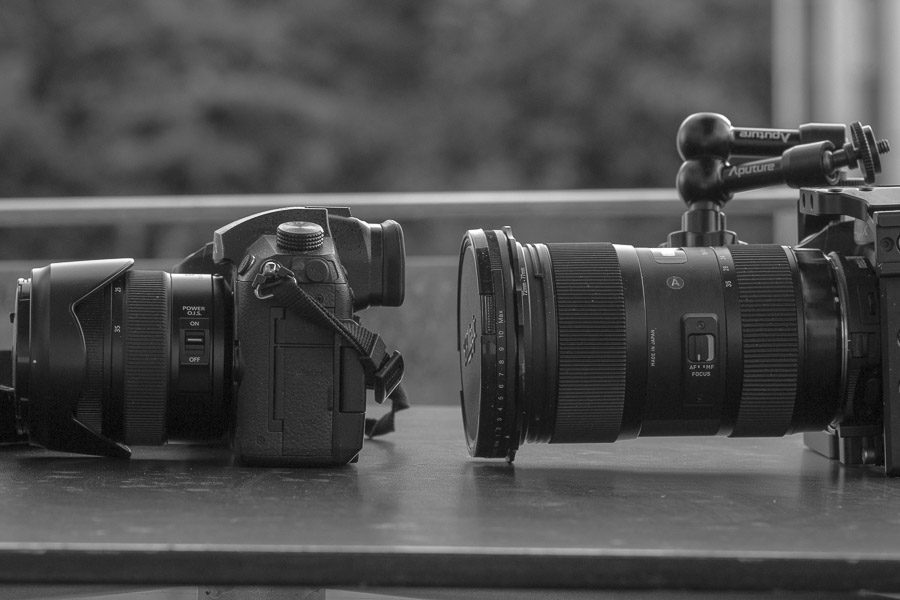
I think, that the 12-35mm from Panasonic really embodies all of the advantages of the m43 system. It is small (ii.66 x 2.91″/ 67.six 10 73.8mm) and extremely calorie-free-weight (merely 10.8 oz /305 thousand).
Information technology has a constant aperture of f/ii.eight through the whole zoom range (maximum is f/22) which is pretty impressive in such a pocket-size form factor.
Simply even though information technology is small-scale compared to its FF-rivals, it is by no means fiddly to use, and I call up it rest nicely in the palm of my mitt when I shoot handheld.
The Lens Is Great For Interviews – If The Await You're Going For Doesn't Require A Lot Of Bokeh
At present, f/two.viii isn't going to give you lot a peachy bokeh unless you get really close to your subject at 35mm.
So this lens isn't platonic for portraits and interviews if you're looking for a really blurry background. Not unless your subject won't listen having your camera up really close!
But for those interviews which require a medium close-upwards to a full shot (or long shot) this lens is perfect.
The wait of the bokeh itself is okay – just cipher special – and is produced by the rounded seven-blade diaphragm in the lens.
Focusing And Focusing Speed

The Lumix 12-35mm isn't a movie theatre lens, so information technology doesn't come with follow focus gears.
The focusing organization is focus-by-wire every bit is the case with the other MFT-lenses from Panasonic.
The focusing ring has a nice feel to information technology, and I find it piece of cake to utilize when I'thousand manually focusing.
Since I'm not doing any precision work with this lens (like I sometimes have to with e.g. an f/1.2 lens), I haven't felt the demand for a bigger focus ring.
In fact, I recall the lens has just the correct amount of resistance for a fast manual focusing experience. And a skilful manual focus ring is important to me since I never use continuous autofocus when I'one thousand shooting video.
When I practice utilize autofocus, I apply back-push button focus for both videos and photos.
For video, I mostly practise this when I'1000 shooting interviews where the subject is sitting or standing yet. Simply I also utilise it to shoot B-whorl when I need to react fast to take hold of something.
In those situations, the back-push button focus on my GH5 offers a quick fashion to nail the focus and start recording. And I think the lens focuses fast and doesn't hunt 95 percent of the time.
The aforementioned is true when I'chiliad out taking photos for a client.
The Lumix 12-35 has a switch, which enables you to switch betwixt manual and autofocus.
In short, I wouldn't use this lens where any manual focus pulling is needed. For that, I would employ a manual lens with follow focus gears.
Simply as a workhorse for client piece of work similar interviews and B-whorl where time is of the essence, the autofocus arrangement of the Lumix 12-35 has performed flawlessly and continues to do so.
Image stabilization
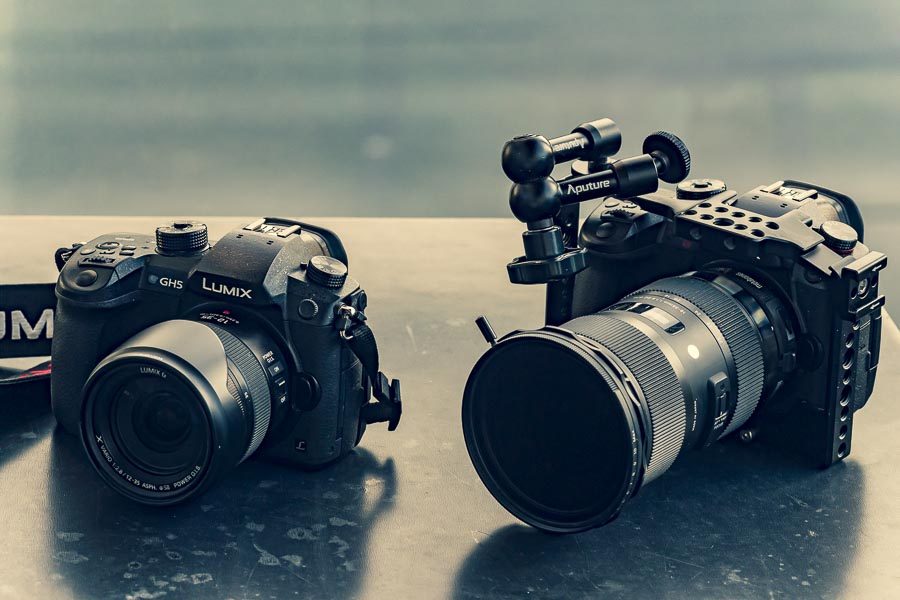
The Lumix 12-35mm mark Two has Optical Epitome Stabilization (O.I.S.) which works in tandem (dual IS) with the in-body sensor stabilization (IBIS) if yous own e.grand. a Panasonic GH5, G9 or G85 for true 5-axis stabilization.
Please note, that if y'all're buying a used version of this lens, and you want to take reward of the dual IS2, you have to become the newer version, because the kickoff iteration of this lens can't exist upgraded to dual IS2 via firmware due to hardware limitations.
The first iteration of the 12-35mm will still be able to piece of work with dual IS v1 though, and the difference betwixt the ii is but half a stop. In other words, you probably won't find the divergence if you're only doing video work.
With the Panasonic 5-centrality stabilization, I can shoot handheld with my Panasonic GH5 even at slow shutter speeds of around one 2nd. The five-axis dual IS in the GH5 is yet not every bit good equally the Panasonic G9 or Olympus E-M1 Mark Two, only it is more enough for me. And the dual IS is splendid for video.
If I put the Lumix 12-35 on my GH4 or GH5s, which don't accept a stabilized sensor, the internal O.I.South. still does an excellent job at minimizing small shakes and jitters, but likewise larger shakes.
Actually, I find the O.I.S. is better suited to combat bigger shakes than the sensor stabilization in my GH5 alone. I recall this is because larger shakes will make the IBIS run out of correction range considering there's only so much room for the sensor tin move to combat shakes.
The lens has a switch which lets y'all switch off the O.I.S. Though, why you would want this, I don't know, because in brusque, the O.I.S. of this lens is excellent.
Weather sealed
Another matter I love about this lens is that information technology is weather sealed.
I've pulled this thing out in the rain, snowfall and frost, and dry dusty environments, and information technology has e'er performed flawlessly.
Summary Of The Lumix 12-35mm f/two.8 ii
The Panasonic Lumix 12-35mm f/2.viii II is a beast of a workhorse for run-and-gun video and photography.
Information technology is my goto lens for interviews where I demand to film the whole or the upper body of the interviewee (full shots to medium shots) eastward.g. while they are standing or sitting in a chair.
If I need more than bokeh, I by and large become with a lens with a longer focal length and/or wider aperture. And if I'm going to picture show in situations with picayune light, I'll cull the Sigma instead.
The lens is well-built, lightweight and small, however yet covers a user-friendly focal length range of 24-70mm in 35mm equivalent.
The O.I.South. is excellent in itself. And then you tin can easily use it with other cameras within the MFT-system (like the Panasonic GH5/s, Sony a6500, or Olympus OM-D Eastward-M1 Two) and still get great results simply with O.I.S.
Combined with the IBIS of my GH5, information technology is possible to shoot handheld at depression shutter speeds. I've used this lens on boats and while filming in busses for a client with neat results.
And also, the atmospheric condition sealing works wonders. I've come to trust the GH5 + 12-35mm combination in all kinds of weather condition.
I bought the lens when it first hit the market place at full price, but already you can find information technology for quite a bit less.
I won't recommend you purchase this as a greyness marked particular (I call up it is too expensive to not accept covered under warranty). Also, yous desire to make sure you go the 2017 version in society to be able to use the dual IS, and then here's a link to the non-grey market version of Lumix 1000 Vario 12-35mm f/2.8 2 on Amazon.
Sigma eighteen-35mm f/one.8 DC HSM Art Lens for Canon EF
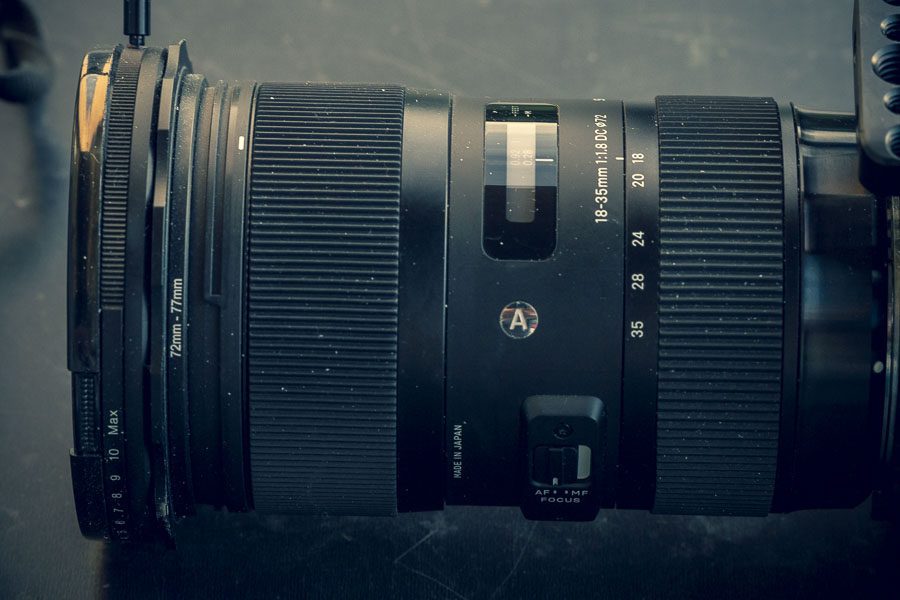
Then let'southward motility on to the Sigma 18-35mm f/1.8 Art-
This lens is designed for APC-Due south sized sensors, which are bigger than MFT. It is also non designed for MFT-mounts, so you need some kind of converter.
The version I have comes with a Canon EF mountain. I've chosen to combine it with the Metabones Speed Booster Ultra 0.71x focal reducer.
I adopt the Metabones adapter since I've never had problems with them. They have a tight fit with no play. Brand sure to become the Metabones 0.71x version and not the 0.64x version since the latter will crusade vignetting.
Here'south a link to the Metabones Speedbooster Ultra 0.71x version on Amazon.
The popular combination makes the Sigma eighteen-35mm have a field-of-view of approximately 25-50mm when compared to a full-frame equivalent.
Non only that but it likewise ads one finish of light to the Sigma, and so the aperture becomes f/1.2!!
With the Metabones this lens is a fauna in low lite.
This lens lives on my GH5s. I think the terminal fourth dimension I had it off, was to make some astrophotography timelapse with my GH5s in the South of Kingdom of spain in the summer of 2018.
Image Quality

The 18-35mm is part of the 'Art' serial from Sigma, which offers top-of-the-line image quality across the line.
And the epitome quality of the Sigma is nothing short of spectacular. I've used it for photos and video extensively, and I just love how it renders colors.
It is extremely abrupt. I think the only lens I own, which is sharper, is the 75mm from Olympus.
If I was to get for a soft organic film await, this would non be my become-to lens.
Just for crisp articulate footage, this lens really shines.
The 9 rounded aperture blades render a prissy bokeh. We're not talking perfectly circular bokeh balls, nor silky shine blur, like you, can go with lenses with e.g. 16 blades.
Personally, I adopt bokeh similar it is on the Sigma. I don't like the "perfect" bokeh because I experience it lacks grapheme. Heck, I even love the jagged uneven bokeh on my old Catechism 50mm FD.
Build Quality

The build quality of this lens is excellent.
The barrel is made from Thermally Stable Composite (TSC). I have no idea what that ways, just it feels hard and sturdy. And the brass bayonet seems well congenital.
In short, I have no worries when I throw information technology in my haversack.
The lens is big (3.07 x 4.76″ / 78 10 121 mm) and heavy (1.78 lb / 810 g) compared to native MFT-lenses, and some would argue that using a lens such as the Sigma goes against the whole idea of the MFT-organisation.
I love it though. I like the weight of it when I shoot it handheld. The weight helps requite me some extra stability.
And the big focusing ring makes dialing in manual focus a breeze.
Speaking of focusing…
Autofocus
Every bit I wrote earlier, I never use continuous autofocus on my GH5 or GH5s. This has more to do with the poor operation of the autofocus in the cameras than in the lenses though.
To be honest, I oasis't seen a continuous autofocus system, I would really trust anyway. Not fifty-fifty from Catechism or Sony. From what I've seen they all seem to breath or hunt for focus when the subject is moving.
So like I practice with the Lumix 12-35mm, I merely use back-push focus to quickly punch in focus in situations, where my subject area is fairly still.
I practise find that the Sigma 18-35mm hunts a flake more for focus than the Lumix 12-35mm, which is peculiarly true for apertures larger than 1.8.
It is to be expected though since nailing the focus with a shallow depth-of-field becomes more hard.
That is some other reason why I similar the large focus ring.
Like the 12-35mm from Panasonic, the Sigma also has a switch for switching between manual and autofocus.
The Sigma 18-35mm is a mechanical focus lens, and if you've got the cash, it is besides available in a cine version with cine focus gears and T-stops.
I plan to purchase the cine version quondam in the future. I just need to detect that pot of gold at the end of the rainbow.
No Conditions Sealing

The Sigma doesn't accept any weather sealing. So if it is raining, snowing or very dusty, I wouldn't recommend this lens.
For those times, I e'er go for the Lumix when I need this focal range.
No Image Stabilization
The Sigma 18-35mm doesn't come with optical image stabilization.
I've used it with my GH5 and used the IBIS in that with great results for both photo and video.
Only even though it doesn't have O.I.S., I actually adopt to take it on my GH5s, which doesn't have IBIS.
I use it either on a tripod for interview piece of work. In those cases, information technology doesn't thing that neither the photographic camera nor the lens isn't stabilized.
And if I shoot handheld, I usually put it in a muzzle with a handle. Information technology provides some shaky footage, simply with the handle, I'g able to utilize this for a dramatic and dynamic effect. I remember it works great!
Summary Of The Sigma 18-35mm f/1.viii Fine art
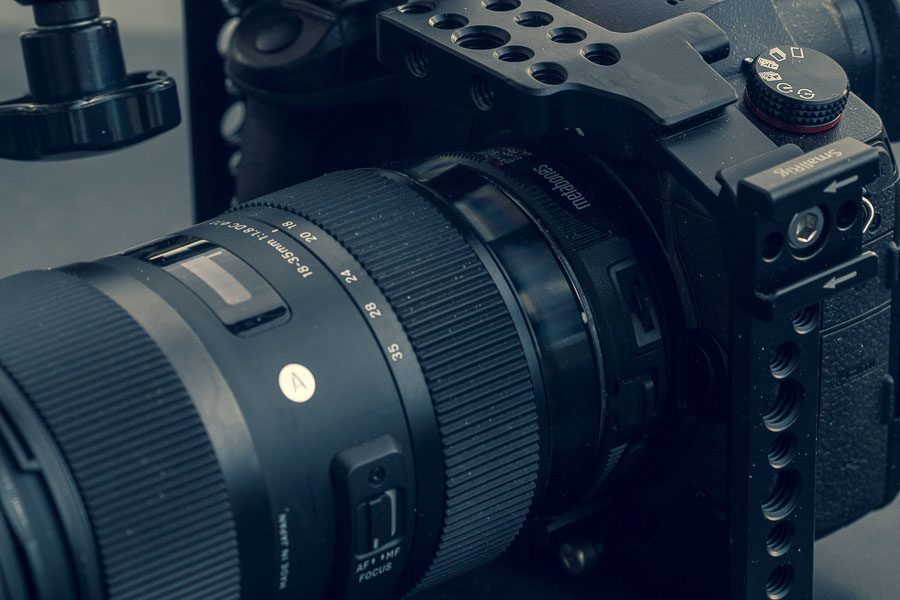
The Sigma xviii-35mm f/1.8 is an amazing lens. The image quality is on par with some of the best glass out there, and it'southward as sharp as most primes.
The Sigma is bigger than about native lenses for the MFT-organization, but personally, I don't mind. I actually similar the extra weight and bulk as information technology ads more than stability when shooting handheld.
Similar the Lumix 12-35 mm I utilize this lens for full shots to medium shots, but I've also used it for extreme close-ups of e.k. the eyes of my subject.
And also like the Lumix, if I need more bokeh, I mostly go with a lens with a longer focal length and/or wider discontinuity.
If I'm shooting in low lite, I by and large apply the Sigma instead, considering of the f/1.ii aperture I go when couple with my Metabones Speed Booster.
The lens is extremely well-built and feels less plasticky than the Lumix.
The lens doesn't have O.I.S. or weather sealing. And so if these are important to you, you should choose the Lumix instead.
However, you lot tin can use it together with a camera with IBIS like the Panasonic GH5 or Olympus OM-D E-M1 II.
I found this neat kit with the Sigma 18-35mm f/1.viii Art which not merely includes the lens, only besides the USB dock you use for calibrating the lens and updating the firmware, a backpack, a 72mm filter kit, cleaning kit and more on Amazon.
Also, bank check out the deals available on Adorama. They as well have different packages bachelor with different accessories, unlike mounts (Pentax, Nikon, and Canon) and you lot can fifty-fifty get a kit that includes both the Sigma 18-35mm, the Sigma 50-100mm f/i.8 plus accessories.
Notes on the Sigma eighteen-35mm for Nikon mounts
Here'south a tip for you lot: if yous don't own whatever other lenses with the Catechism EF mount or already own a lot of Nikon glass, yous tin go for the Sigma 18-35 with a Nikon mount instead. Here'south a great deal on the Nikon version of the Sigma 18-35mm f/1.8 Art similar to the Catechism kit mentioned to a higher place.
Then you need to purchase a Metabones Speedbooster for Nikon mounts too. Hither, you tin bank check the current price for the Metabones Speed Booster Ultra for Nikon on Amazon.
The Nikon philharmonic is sometimes cheaper than the Canon philharmonic. And so if you aren't invested in either Canon or Nikon drinking glass it is ever a skilful idea to check the current prices, and see what combo gives yous the all-time bargain.
Still, yous should know, that if you practise buy the Nikon version of the Sigma xviii-35mm, you'll accept to manually enter the focal length each fourth dimension you lot attach the Sigma to your camera again. If you don't, the IBIS won't be able to work properly with the lens. This doesn't use to the Canon version, which communicates focal length electronically.
Notes on alternatives to Metabones: focal reducers from Viltrox
The Metabones Speedbooster is excellent, simply also expensive. If you're later a cheaper culling, y'all should check out the every bit popular focal reducers from Viltrox instead.
Here y'all can bank check the electric current price for the VILTROX EF-M2 0.71x for Canon on Amazon.
And here y'all tin check the electric current price for the VILTROX NF-M43X 0.71x for Nikon – too on Amazon.
You can save a lot of money by going with Viltrox and Nikon mount instead of Metabones and Canon mount.
You can read almost more alternatives to the Metabones Speedbooster in this commodity: Best Affordable Alternatives To The Metabones Speedbooster.
But there is the lack of electronic communication betwixt the camera and the lens, yous take to live with.
And also, I've read a lot of reviews of the Viltrox adapters, and there seem to exist a lot of bad ones out in that location.
My guess is they don't become through the same rigorous quality-testing routine every bit the Metabones. And maybe the components aren't as adept. And so it's kind of a hit or miss if you lot get a practiced 1. That's is why I ended up buying one from Metabones.
Conclusion
I love both the Panasonic Lumix 12-35mm f/2.8 II and the Sigma eighteen-35mm f/1.8 with the Speed Booster from Metabones.
The Panasonic is definitely the about versatile of the ii. Information technology is smaller, more calorie-free-weight, has excellent O.I.S. and is weather sealed, and I've come up to rely on this lens in many situations.
If I knew I was going to shoot a lot of run-northward-gun footage outside in changing weather conditions, and I could only pick 1 of the 2 lenses the Lumix 12-35 would be the one.
The Lumix 12-35 is a workhorse, and information technology gets the task done.
Yet, I'm more in dear with the Sigma 18-35mm. Information technology's my go-to lens whenever I want that fleck of extra graphic symbol and quality.
It doesn't have weather condition sealing, and it isn't fifty-fifty stabilized, merely for some reason, I just love these images and the footage I become from this lens more.
It's actually difficult to pinpoint what it is. Considering both lenses are incredibly sharp (though the Sigma is the sharpest of the two), and both offering swell image quality.
Simply the Sigma just offers that fleck of extra "something", which I actually love.
In conclusion, even though both lenses cover approximately the same focus range they are totally different beasts, and I don't regret ownership both.
The Lumix 12-35mm is the bread-and-butter workhorse when I need to move fast and go the job washed. It handles rain, snow, and dust and focuses fast.
The Sigma eighteen-35mm is the diva, which needs a bit of actress honey. And it doesn't like to get moisture. Just if you care for it correct, it will perform for yous and you'll beloved what it has to offer.
Do y'all own one or the other? Or perchance both? Which one is your favorite?
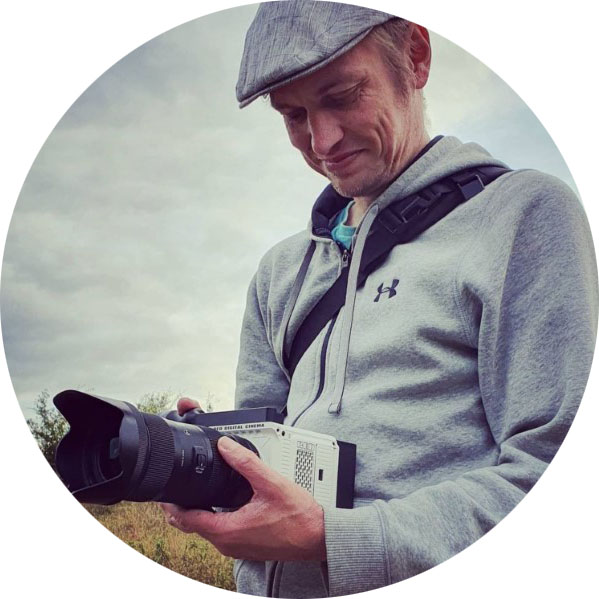
About the writer:
Jan Sørup is a videographer and photographer from Denmark. He'due south the owner of filmdaft.com and of the Danish visitor Apertura , which produces video content for large companies in Kingdom of denmark and Scandinavia. January has a background in music, has drawn webcomics, and is a erstwhile lecturer at the University of Copenhagen.
Source: https://filmdaft.com/guide-panasonic-lumix-12-35mm-ii-vs-sigma-18-35mm/
0 Response to "Sigma 1835 18 Art Focal Ranges for Micro 43"
Post a Comment